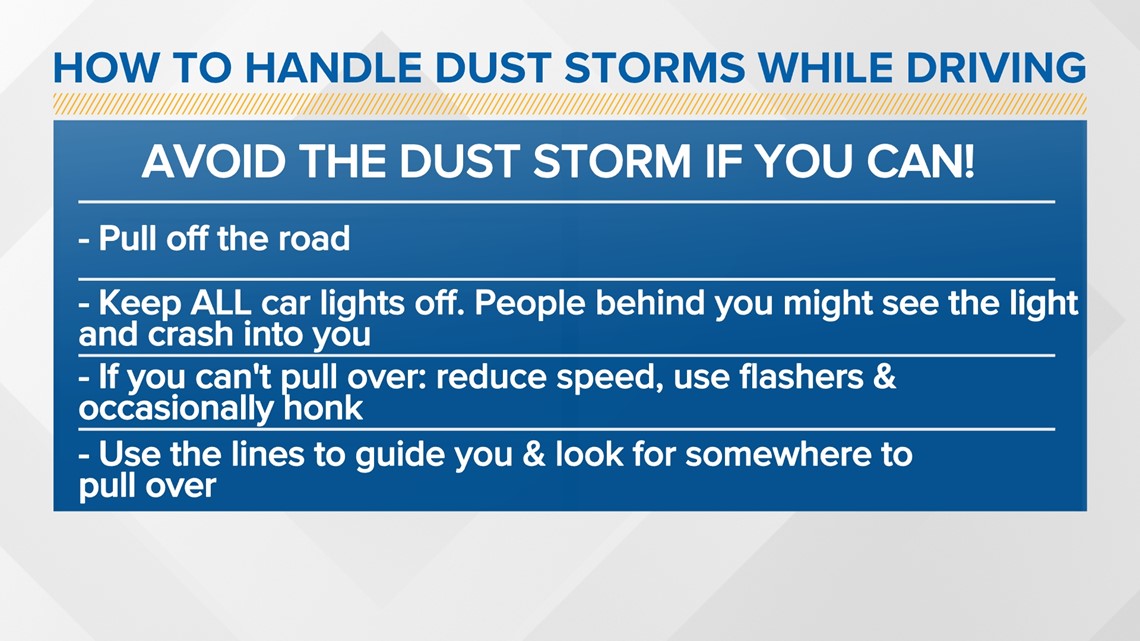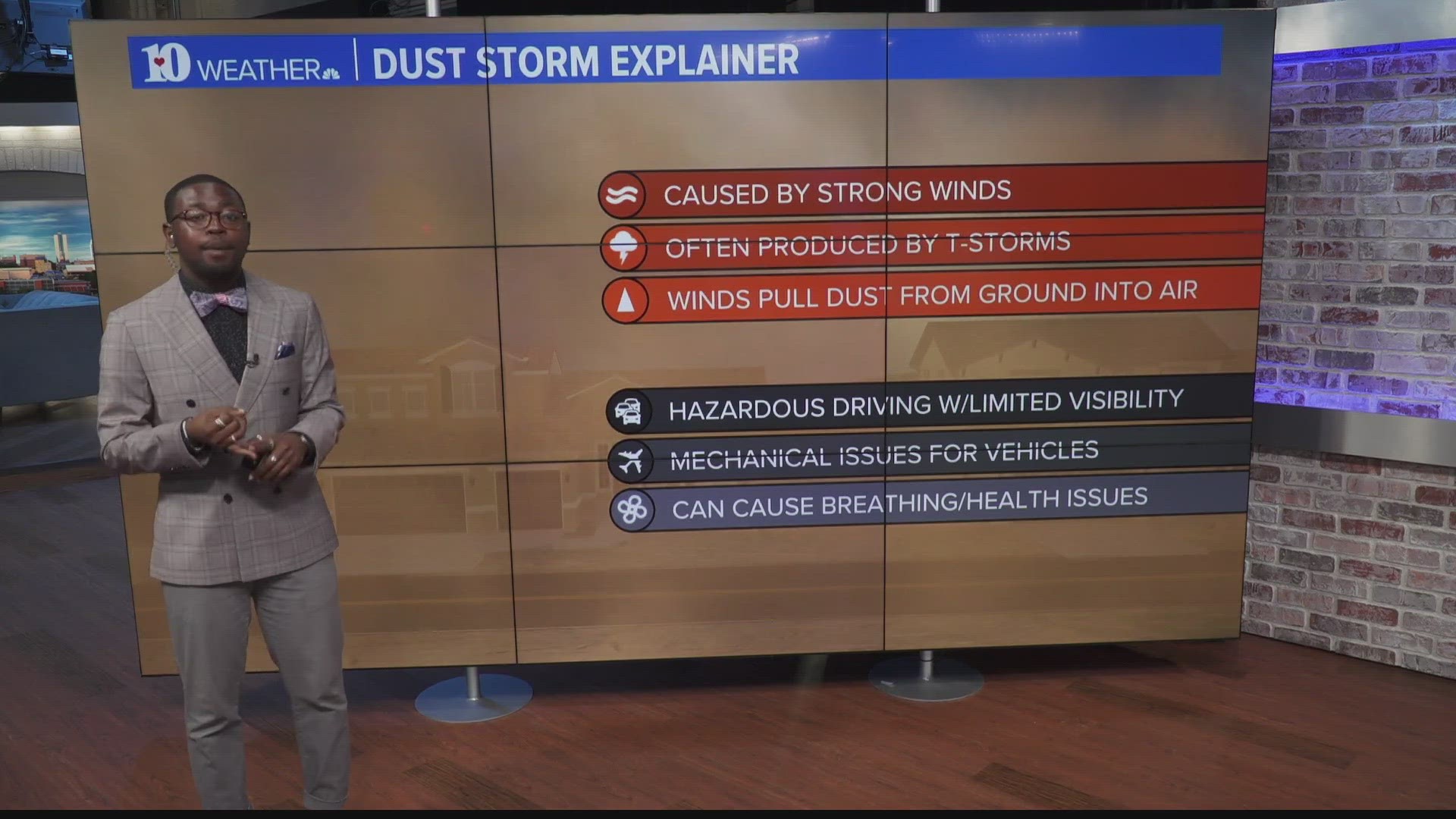KNOXVILLE, Tenn. — On Monday afternoon, strong winds in Central Illinois led to a massive dust storm, spanning 20 miles over I-55, just south of Springfield, IL. This dust storm was disastrous, leading to a 72-car pileup that resulted in six deaths and over 30 injuries.
These dust storms aren't uncommon in Illinois, but usually, they're more localized than this event. A dust storm of this scale might be something you'd see in the Desert Southwest or West Texas.
So how did we get here? There were a few factors that may have led to this result.
Primarily dry conditions. April in central Illinois saw around an inch of below-average rainfall, but it's still crop-planting season. This means some agricultural activity could've left some barren plots of land open. Combine this with winds nearing 45 mph for the whole day, and you can conclude that the gusty winds picked up that dust and spread it to the surrounding area.
During the dust storm, visibility dropped to zero miles for an extended time, and the National Weather Service at Lincoln/Springfield has been issuing multiple Dust Storm Warnings since then.
So how do you stay safe if you're on the road during a dust storm? The steps to take are similar to if you encounter fog.
First of all - avoid the dust storm if you can. If you can't, then just pull over. If your visibility is too low, it's better to just wait for the storm to pass.
Make sure you keep your car lights off, inside and outside the car. Drivers behind you might use that light as a guide and accidentally collide with you.
And if you can't pull over, reduce your speed, keep on your low lights, turn on your flashers, and honk occasionally so others can detect you. Keep this up until you find a safe space to pull over.



